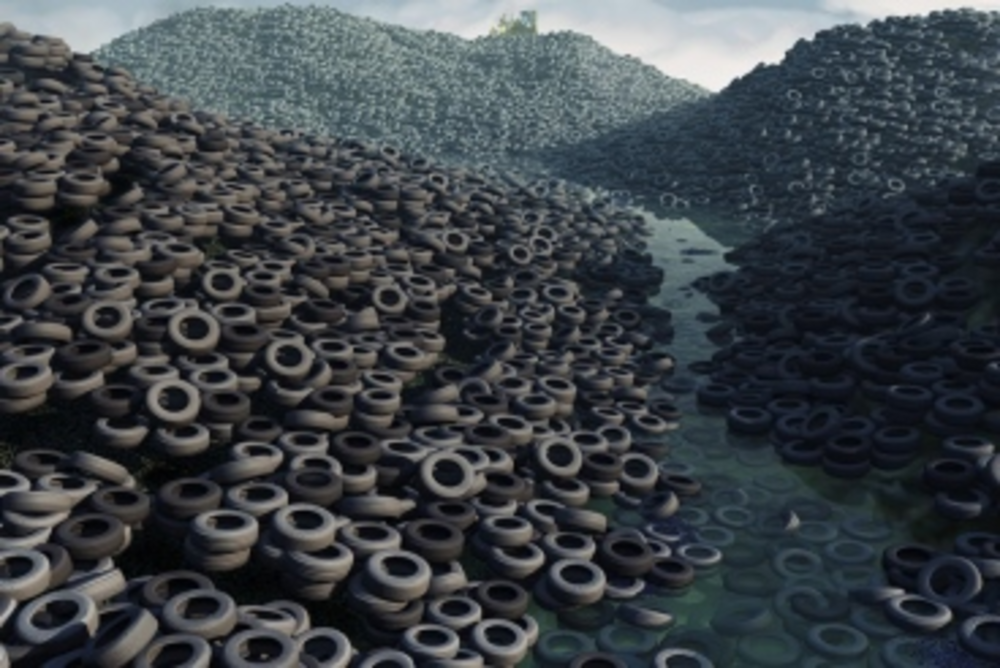It must be so easy to be a marketer. Why? Because while 70% of people say that overconsumption is putting the planet at risk, and half of them admit they’d be happy without most of the stuff they own, they keep consuming new stuff and tossing old stuff at an alarming rate. But here’s the most delicious part of a global survey of more than 10,000 people released by Havas Worldlwide: Though the vast majority of consumers are convinced that current economic models aren’t working, they’re equally convinced that high levels of consumption are critical to economic growth. As Dana Carvey’s Church Lady used to say, “How convenient!”
P.T. Barnum continues to be right, though perhaps his famous quote could be updated to, “There’s a self-righteous yet self-entitled sucker born every minute.” The Earth Day merchandisers have this game down pat. Every year they come out with a new logo for the event, and municipalities and universities also do their own designs, forcing the millions of environmentally concerned Earth Day celebrators to buy new T-shirts that they wear once and then toss. Brilliant!
This is reverse-permission marketing. Consumers, by virtue of their appellation, want to consume. They’re guilty about it, but they’re more than eager to do it as long as they get permission. And that’s where marketers come in. They already want to buy your product, but just imagine how much more they’d buy if you focused your content marketing on endowing them with some form of green certification with purchase?
In that spirit, we consulted the Clean Air Council for intelligence upon which to base some surefire green issue-based content marketing ideas. The italicized facts all come from the “Waste and Recycling Facts” page on cleanair.org.
The Rubber Manufacturers Association estimated that 275 million tires were in stockpiles. I and my cubicle mate Ava are members of a tiny minority. We are among the 0.8% of New York City workers who commute to the office on bikes. That’s a huge marketplace opening for a bike manufacturer willing to work on commuters’ environmental guilt and narcissistic self-images. A bike brand could circulate infographics illustrating what a quarter billion auto tires look like next to a similar number of bicycle tires. (Everest vs. Hamburger Hill) How about bus shelter ads with a fit lady biking past a mountain of old tires with the headline, “Bike to work for your body…and for everybody!”
The average American office worker uses about 500 disposable cups every year. This is a slam dunk in the office wastebasket. An entire branding campaign can be built on this one. Starbucks, or Tassimo, or Folgers, fields a social media-imbued, multichannel campaign to get individual offices (floors, departments) to use their own mugs, sign no-paper-cup pledges, and report on their progress. Offices that stay engaged for a month and report a 50% decline in paper cups get free (brand-marked, of course) mugs from the marketer.
Only 10 percent of the 140.3 million cell phones retired in 2007 were recycled; 40 million computers became obsolete that year, about twice as many as in 1998. 304 million electronics were disposed of from US households in 2005. Two thirds of them still worked. Recycling one million laptops saves enough energy to power 3,657 American homes in a year. What’s more important to Havas’s green-leaning consumer, do you think: recycling mountains of old feature phones or getting a new iPhone model every 18 months? Judging from the fact that thousands of them line up for two days in front of Apple Stores for the latter, the answer appears evident. Why doesn’t a Dell or a Blackberry look to gain some traction in the market by creating indestructible, reuseable laptop and cell phone “shells,” something simple and elegant, personalized and permanent, that could be updated with new guts as technology progresses? The brands could start with a design contest via website and social media and sell these “new consumers” on the idea by having them originate it.
This last idea plays right into an interesting finding in the Havas report. More than half of consumers surveyed said that, in the future, they expected to belong to a number of sharing services that would save them money and keep functional products in service instead of in landfills. Three quarters of these people said they expected brands to act as guarantors of the used products that individuals sell online.








